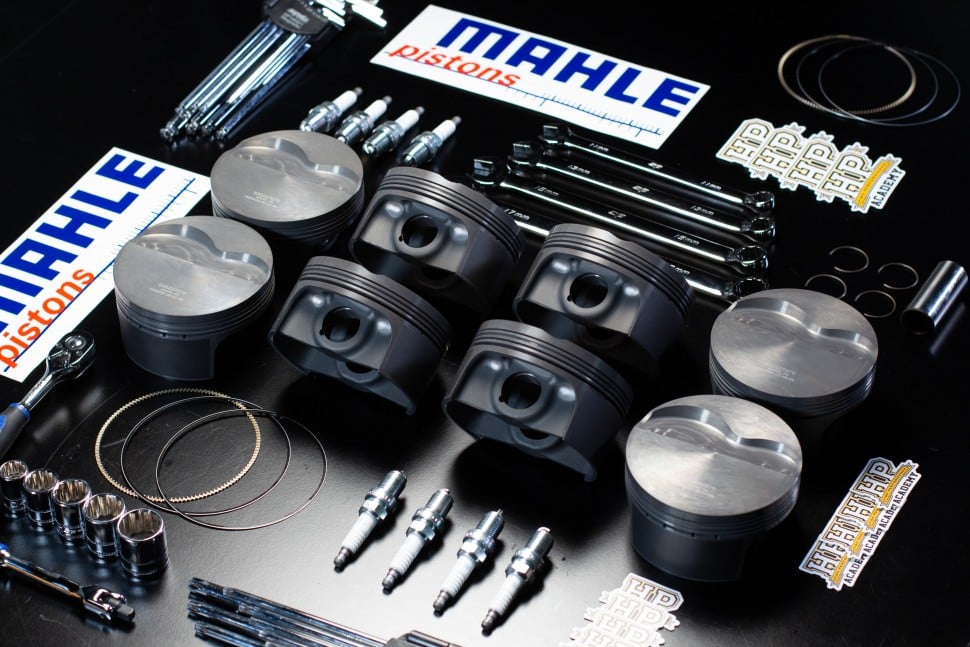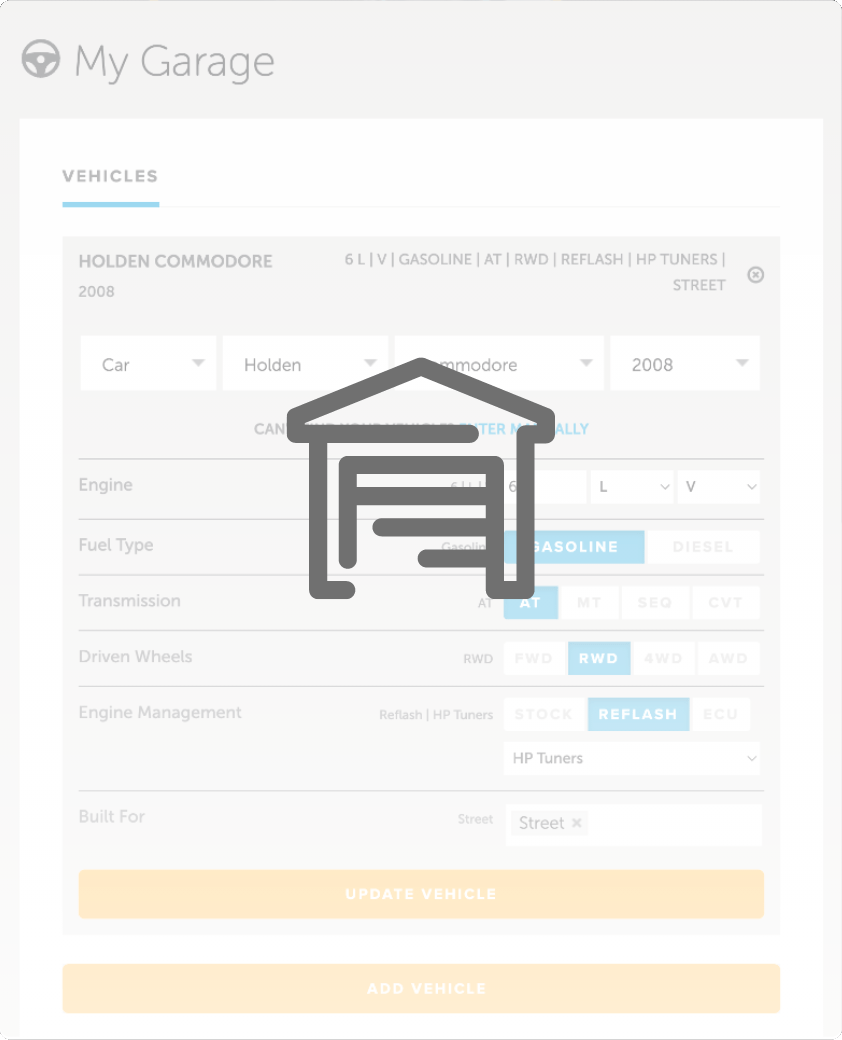| 00:00 |
With the main structure of our subframe in place, it's time to start dialing in the details.
|
| 00:05 |
So, in this module, we'll start on the suspension mounts.
|
| 00:08 |
More specifically, the mounts for the lower control arms and rear mounted cast arms, and we'll be relying heavily on our suspension geometry sketch component for this work.
|
| 00:19 |
We'll start with the lower control arm mount as we've already done a lot of work with the square we've just sketched in our 3D sketch for the tubular structure.
|
| 00:29 |
First, we'll extrude the square profile on the driver's side 10 mm outwards, and then use the fillet tool to round the corners with a 5 mm radius.
|
| 00:40 |
This plate will need four holes to secure a bracket , which will mount the lower control arm.
|
| 00:45 |
Thin spaces will then be used inside the control arm for adjustment to the track and caster.
|
| 00:52 |
Let's start with a sketch on the surface of the plate and mark out the hole centres for the hole tool.
|
| 00:58 |
One way to do this is by sketching four circles on the plate in approximately a square layout, and then if we project the face of the plate, we can use construction lines between each hole, then the midpoints of these to the midpoints of the sides of the plate.
|
| 01:16 |
Following this with some equal and perpendicular constraints, and we can square everything up nicely so we have four 8 mm circles spaced at 35 mm.
|
| 01:28 |
After finishing the sketch, we can open the hole tool and create some holes tapped at M8 by 1.25, then mirror the body to create a replica on the other side.
|
| 01:40 |
With the suspension geometry sketch visible, we can see how the inner joint for the lower control arm sits just out from this face, giving us some room to design a bracket that will mount the control arm at this point.
|
| 01:53 |
The control arm design isn't a part of this worked example, but it will use a 3 quarter inch encapsulated spherical bearing.
|
| 02:01 |
For now we'll design a double shear bracket as a proof of concept, but this will likely be replaced with a machined part eventually.
|
| 02:09 |
We'll start by creating a new internal sheet metal component as this isn't technically part of the subframe, and then sketch on the mounted plate again.
|
| 02:19 |
This will be the base plate for the bracket, so it'll essentially just be copying the mounting plate, but with 8.5mm bolt holes for a small amount of clearance and no rounded corners.
|
| 02:31 |
In the middle of each edge we'll also make a rectangular cutout, which will form a tab and slop arrangement so the bracket is self-jigging.
|
| 02:44 |
After finishing the sketch we'll use the flange tool to create the base flange.
|
| 02:49 |
Checking the orientation is correct so it sits flush with the mounting surface and the sheet metal rules are set to 3 mm steel.
|
| 02:58 |
For the sides of the bracket we'll sketch on the side of the base.
|
| 03:02 |
The first thing to do is project the lower control arm point from the suspension sketch.
|
| 03:08 |
This should be more or less central and we'll place a 12.5 mm diameter hole on this point for the main bolt to pass through.
|
| 03:17 |
We can then sketch the rest of the outline for the side of the bracket, where the bottom will sit on the top of the base and the edges will extend up in a straight line for 25 mm and then join to a tangent arc for a 15 mm radius arc concentric with the bolt hole.
|
| 03:35 |
We'll also use the fillet tool to remove the sharp corners from this transition and then add a tab for the slot into the base with a small amount of clearance for easy fitment.
|
| 03:47 |
Also, some more rectangular cutouts along the side will form slots for the tabs on our next part.
|
| 03:54 |
Again we'll use the flange tool to create this part and then check the orientation is correct to suit the base.
|
| 04:00 |
We can use some mirror tool or move tool to copy it over to the other side.
|
| 04:05 |
Finally, for this part we need some bracing between the sides and the base to ensure it's stiff enough and won't break or introduce excessive compliance.
|
| 04:13 |
For this we'll sketch on the top of the base plate and then project the edges of the base and sides.
|
| 04:19 |
We can add the tabs in with some clearance for the corresponding slots on the other parts and then make a large radius arc between the top of the slots on the side plates.
|
| 04:34 |
Then again it's just a matter of using the flange tool in the correct orientation and mirroring or copying the part to the other side.
|
| 04:44 |
So,me misalignment spaces will be required to centre the control arm bearing in the bracket and provide clearance but we'll leave it at that for now and move on to the rear mounts for the caster arm.
|
| 04:56 |
These mounts will also tie the rear member of the subframe into the chassis mounting points.
|
| 05:01 |
The reason for this being the packaging constraints we have working in this limited space.
|
| 05:06 |
For this we'll start with a sketch on the face between the flanges of the tapered chassis mounts.
|
| 05:12 |
Working on just one side we can project the outer and inner diameters of the flange to do this.
|
| 05:19 |
Next, we need to make sure the suspension geometry is visible and project the point where the caster arm attaches to the lower control arm and also the line from the caster arm traction bar mount through the lower control arm to subframe mount.
|
| 05:35 |
This is a line that we extended earlier and we will refer to this as the suspension axis projection from now on.
|
| 05:42 |
We want the attachment for the caster arm to the suspension axis to be as far back as possible, while still leaving plenty of clearance to the chassis.
|
| 05:51 |
The further back we can get it, the stronger it will be to some extent.
|
| 05:55 |
Having the caster arm attach about 40mm further back than the subframe mounting point is suitable.
|
| 06:02 |
The actual caster arm will mount to a point straight underneath this.
|
| 06:06 |
So, now we need to make a bracket to achieve this and that also ties the chassis mounting point to the rear subframe member.
|
| 06:14 |
In this sketch we'll make the base plate with two lines parallel to the caster arm construction line.
|
| 06:20 |
But spaced 45 mm apart and equally on each side of the mounting point.
|
| 06:26 |
The front ends of these lines can stay floating for a moment.
|
| 06:30 |
The rear ends will be connected 25 mm behind the point with another straight line.
|
| 06:37 |
In the centre of which we'll make a small rectangular tab, again for tab and slot self-jigging.
|
| 06:44 |
We'll also make two rectangular slots along each edge.
|
| 07:03 |
Next, we want to sketch some straight lines around the mounting hole.
|
| 07:06 |
Leaving a 3 mm gap to the outer diameter of the tapers on the mounting stud and receiver flanges.
|
| 07:13 |
And also leaving the inside edge open.
|
| 07:16 |
We can connect the ends of these lines to each floating end of the parallel lines from before with a coincident constraint.
|
| 07:26 |
Finally we'll use the fillet tool to radius the corners around the mounting point at 15mm and finish the sketch.
|
| 07:33 |
Before making the base flange for this sheet metal section, we'll actually use an extrude of our sketch profile to cut the rear member tube on an angle.
|
| 07:42 |
Then we can use the flange tool to create the base as a sheet metal body.
|
| 07:47 |
Again checking the orientation is correct so the flange can be welded to the taper receiver of the subframe and the sheet metal rules are set to 3 mm steel.
|
| 07:57 |
Next, is a simple sketch on the bottom of this plate.
|
| 08:01 |
Tracing the edge of the part with two lines on each side from the back to in line with the centre of the mounting hole.
|
| 08:09 |
We can then use the flange tool to create a new sheet metal part 90mm high on each side of the base that follows the edge and finishes at the tube for the rear mount.
|
| 08:20 |
So, it can be welded along this edge.
|
| 08:23 |
The rear member will also be butt welded to the inside of this part and we'll add another brace soon to tie it all together.
|
| 08:31 |
Following this, another sketch on the outside face of the outer flange.
|
| 08:35 |
The first step is projecting the caster arm mounting point from our last sketch and placing a circle on this for an M8 bolt hole.
|
| 08:44 |
We can also project all the edges of this flange and the inner flange and then sketch a profile to remove material so the edge drops down to in line with the mounting tube at one end.
|
| 08:57 |
While still coming up over the bolt hole and around the back and we'll round that back corner with an arc tool.
|
| 09:05 |
The main cut will be done with the extrude tool in two directions and the fillet tool to finish any sharp corners.
|
| 09:15 |
The flange tool can be used to create tabs on the bottom edge for the slots in the base plate as well as the back edge for the brace that we'll make next.
|
| 09:23 |
We just need to set the angle to zero degrees and use the two sides preference varying the distance values to get what we want.
|
| 09:31 |
It's worth making sure the bodies remain as sheet metal parts as sometimes these processes can convert them to solid models and then we wouldn't be able to create the flat pattern when that time comes.
|
| 09:45 |
The next step is creating a brace to tie the base plate to the side flanges and the rear tubular member.
|
| 09:53 |
For this we'll sketch on the back surface of the flanges or the base plate, projecting the edges and also using the intersect tool on the rear member to find the profile where the sketch plane intersects the surface of this part.
|
| 10:08 |
Then we can just connect the points of the line tool and some arcs into the intersect profile and then bring the profile to life with the flange tool.
|
| 10:16 |
That completes the sheet metal structure for the rear chassis and caster arm mounts and these bodies can be mirrored onto the other side.
|
| 10:25 |
As the caster arm will be a turn buckle style arm with 14 mm rod ends and misalignment spaces between the double shear bracket, when the bolt is done up, this will add more structure to the sheet metal assembly.
|
| 10:38 |
In the next module we'll finish off the subframe with the steering rack mounts.
|





